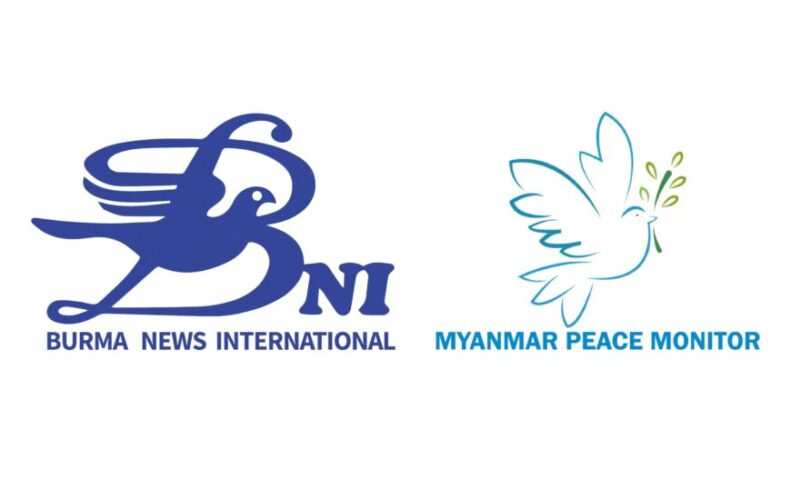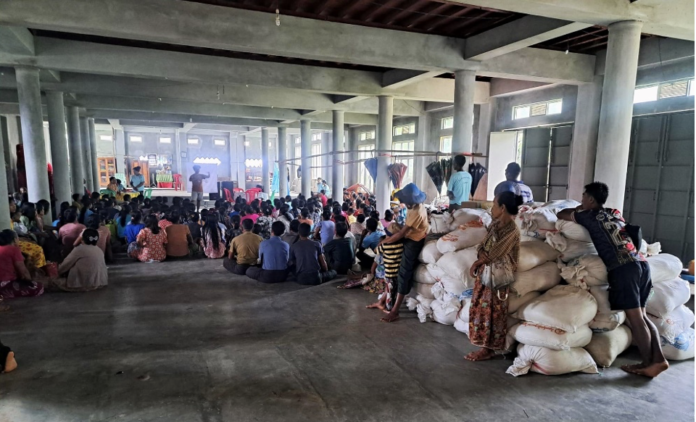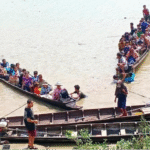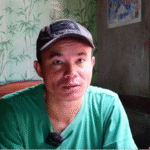An intreview with Nai Aue Mon, an official from the Human Rights Foundation of Monland (HURFOM), about the violations of human rights and arrests and killings of civilians in southern Myanmar
In July, 58 people were killed and 159 others were arbitrarily arrested in Tanintharyi Region, Karen State and Mon State in southern Myanmar, according to the HURFOM.
HURFOM is documenting these incidents in the region monthly and is currently compiling data for the August report. Among those killed due to arbitrary arrests and torture, are women and children, said Nai Aue Mon, an official of the HURFOM.
Network Media Group interviewed Nai Aue Mon, an official of the HURFOM, about the human rights violations, arrests and killings of civilians and the destruction of civilian houses in southern Myanmar.
Q: According to HURFOM, in which states and regions were the houses destroyed in July?
A: In July, more than 120 houses were damaged or destroyed. The majority of these cases were reported in Yebyu and the eastern part of Dawei in Tanintharyi Region, as well as in Kyainseikgyi and Kawkareik Townships in Karen State, and Bilin, Kyaikto, and Ye Townships in Mon State.
Q: What are the primary causes of the destruction of civilian houses?
A: The primary causes of the destruction of civilian houses are indiscriminate shelling and targeted attacks on civilian areas by the military council. Some houses were partially damaged or destroyed, while others were completely ruined or burned to ashes. In total, approximately 120 houses were affected, including those that were partially damaged, completely destroyed, or reduced to ashes.
Q: How many people have been displaced as a result of the destruction of their houses?
A: We release a monthly list. According to the July list, the total number of internally displaced persons (IDPs) in Mon State, Karen State, and Tanintharyi Region reached 75,000.
Q: What is the current situation of the IDPs?
A: Most of the IDPs are seeking refuge in areas controlled by resistance organizations: Karen State, areas controlled by Mon armed groups like the New Mon State Party in Mon State, and areas under PDFs affiliated with the NUG in Dawei. They are facing huge difficulties. Many IDPs had to flee so quickly that they could only carry the clothes on their backs, leaving behind their belongings. Many were unable to bring even a bag of rice or a Pyi of rice. In ERO-controlled areas, major challenges include insufficient rations, low stock levels, and a lack of adequate temporary shelters and tents. Health and accommodation also remain significant issues, forcing many to live in dire conditions.
Q: According to HURFOM’s report, the number of people arbitrarily arrested in July doubled compared to June. How many were arrested?
A: According to the final list for July, 107 people were arrested, with 52 still in detention. The total number of those arrested is 159. Currently, there are 52 pending trial cases. The list does not include individuals arrested as porters or human shields, as well as those who are missing.
Q: Are women and children included in the list of those killed?
A: There were around 16 reported cases, including women and children.
Q: What types of people are primarily being arrested, and what are the reasons for their arrests?
A: Most of those detained are prominent activists from the government led by National League for Democracy (NLD), individuals involved in political parties, persistent opponents of the coup, and some family members of organizations opposing the junta. They are arrested because they are on the junta’s radar. The military council primarily targets those who assist IDPs, are accused of supporting PDFs, or are suspected of supporting the revolution in any way. Some detainees have committed no offenses. Ordinary villagers are often arbitrarily accused. The military council frequently arrests villagers, accusing them of funding, providing rations, or supplying information to armed groups in the forests. The nature of the arrests varies widely.
Q: According to your report, how many detainees were killed and injured due to arbitrary arrests and torture?
A: Beatings of detainees after arrests are common, with many cases reported. There are 110 injury cases, including those resulting from arrests, shelling, and armed conflict. Additionally, there have been 58 reported murder cases, a figure that is relatively high.
Sent by NMG



